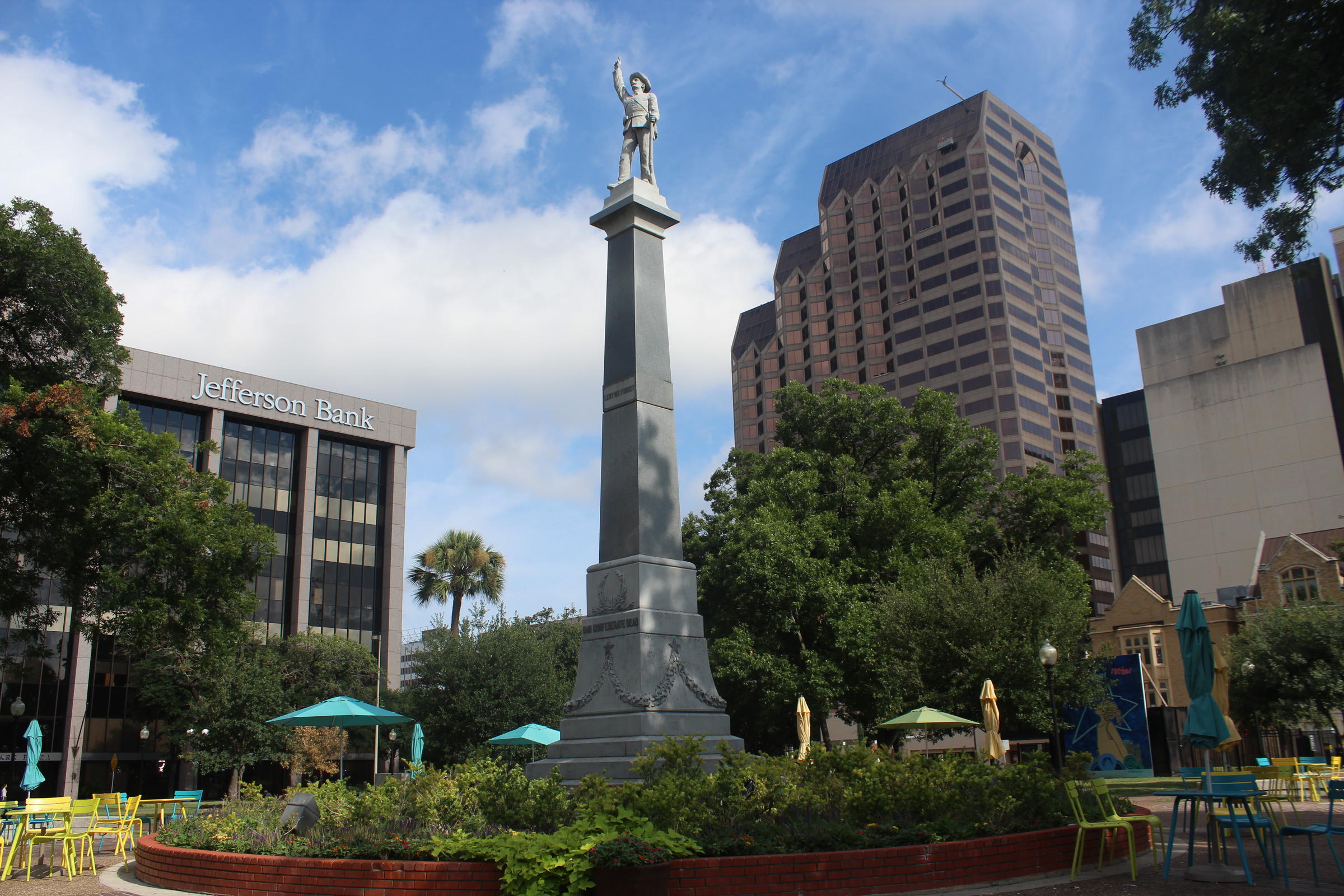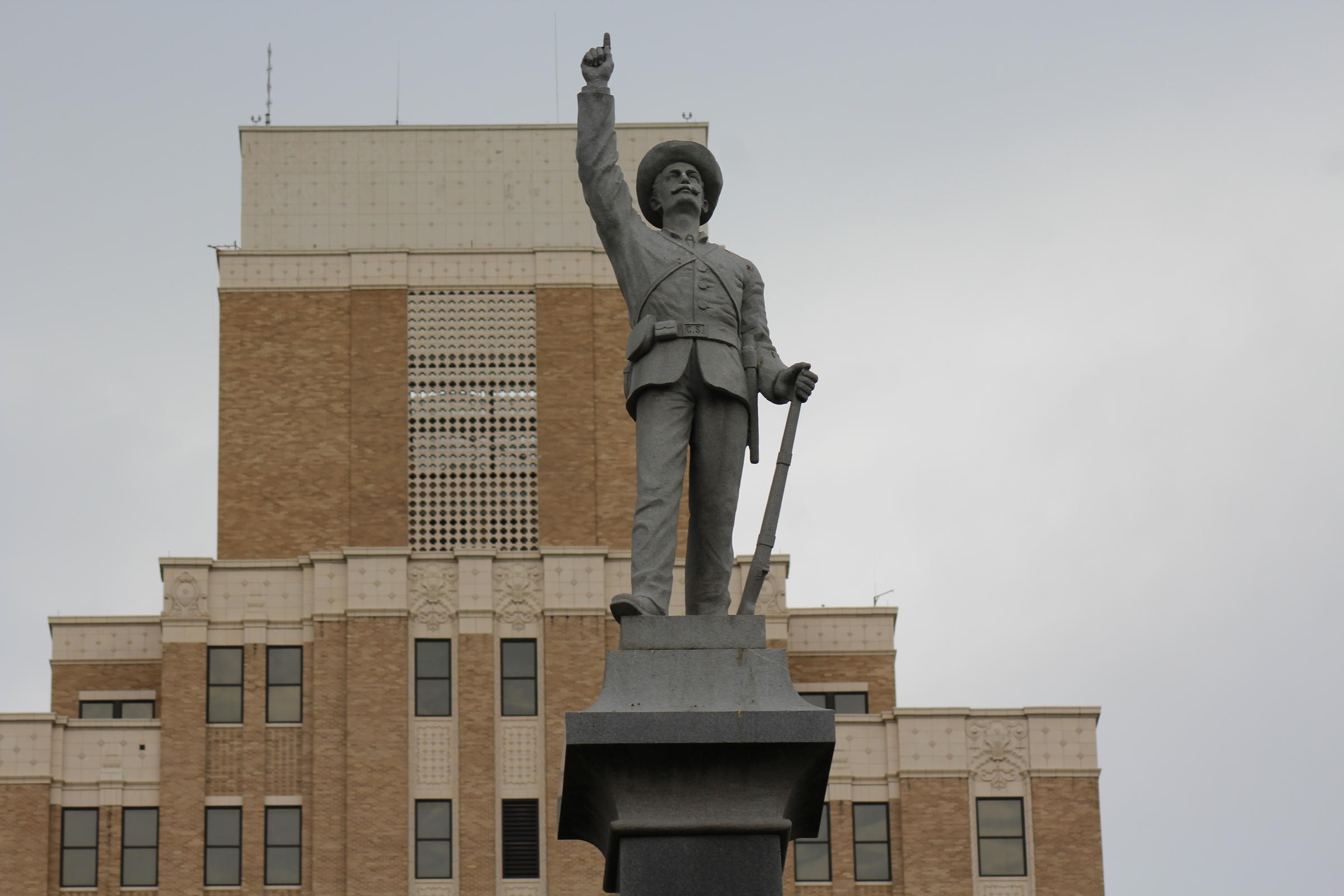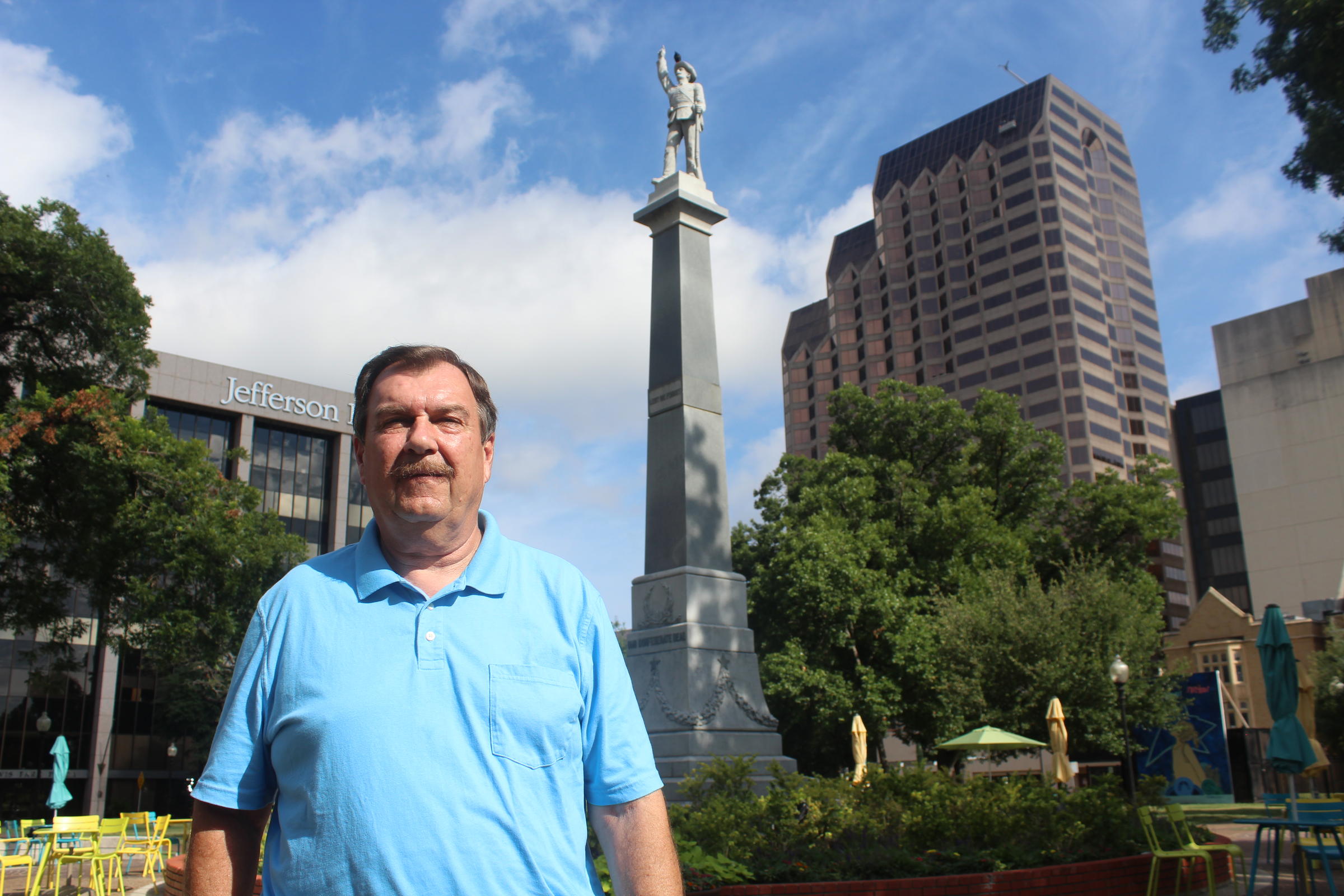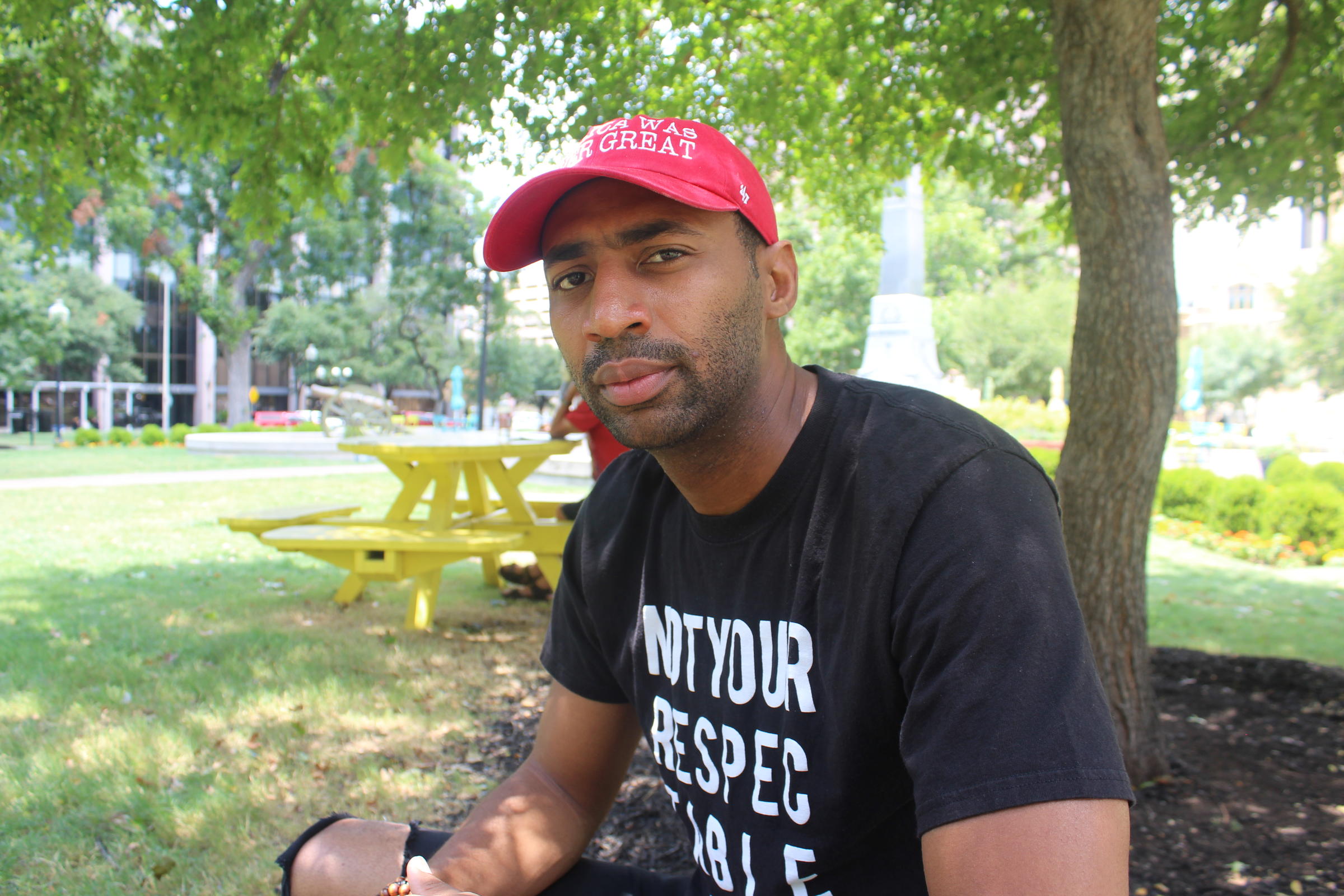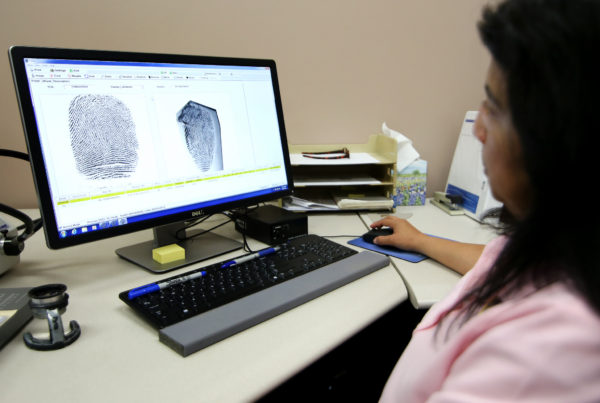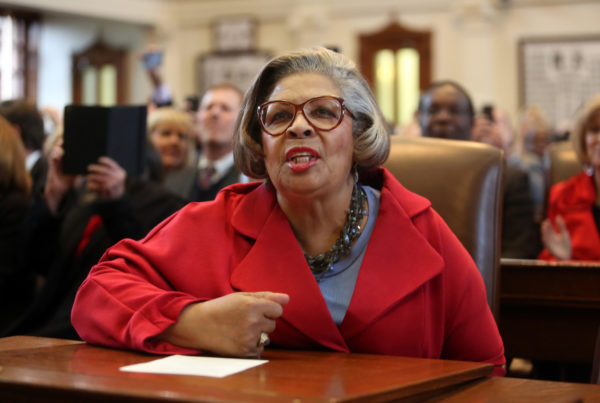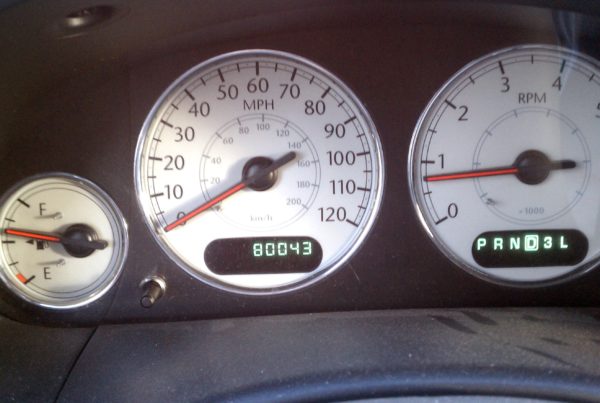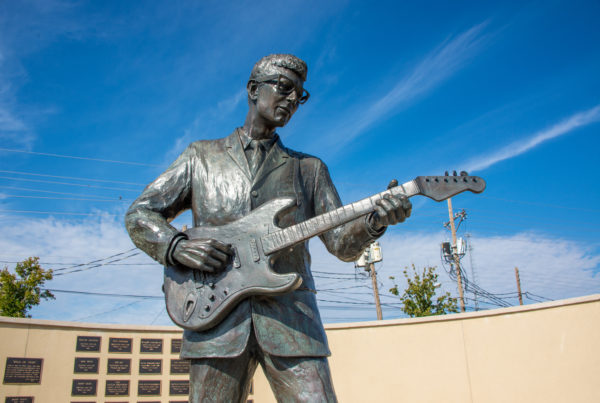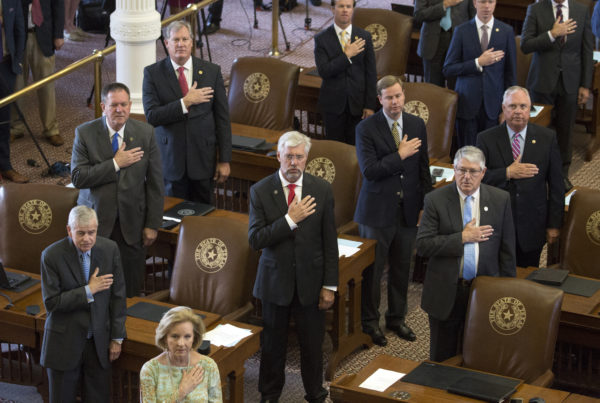From TPR:
The 147-year-old Travis Park is near the northeastern edge of downtown San Antonio. It’s nestled between two churches and a towering office building. Here, people often do group yoga, play with a giant chess set or check out a book from a city-operated kiosk.
In the center is a vertical monument about two stories high. An inscription says, “Lest we forget our Confederate dead.” At the top is an unnamed Confederate soldier with a finger pointing upward.
“And the reason he’s got his finger pointed in the sky: That’s typical for monuments. …He’s pointing to heaven that he wants to go and be with his fellow soldiers,” says John McCammon, from the Sons of Confederate Veterans.
He adds that the monument is a tribute to unnamed Confederate soldiers who died in the Civil War.
“This is not to a specific individual. This is for people that are dead and their graves aren’t marked. This is a marker for the buried soldiers that we don’t know where they are,” McCammon says.
The Daughters of the Confederacy erected the monument in 1899, albeit with some local resistance. City records from the Office of Historic Preservation show that an 1898 article in the San Antonio Daily Light stated that the monument “would likely be the scoff of future generations.” Over one hundred years later, people are calling Confederate monuments a symbol of racism and of a divided country.
Mike Lowe is the organizer of SATX4, a local activist group that tries to expose systemic racism.
“This memorial – I don’t care if it was Jesus up there – represents a system and way of life that thrived off of oppression,” Lowe says.
There have been several protests in the park against the monument, and Lowe says it does not belong there.
“At the end of the day, this open-space public reminder of what that represents is offensive to my community and my ancestors who lived, seeking to be free — and were punished for that,” Lowe adds.
Two San Antonio City Council members have taken notice of the controversy over the landmark. District One Councilman Roberto Treviño and Cruz Shaw of District Two want to introduce proposals to move it. Shaw says it should be placed in a museum.
“Monuments like that need to be placed in a historical facility — i.e., a museum, maybe a college or university, something that can represent history, so we’re not erasing history, we’re just putting it into a location where that history is put into a proper context,” Shaw says.


